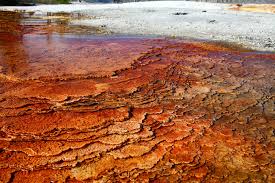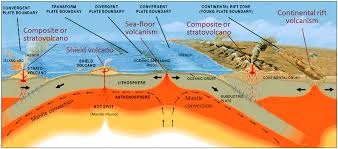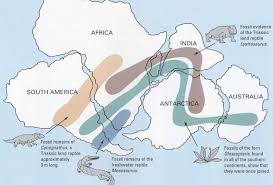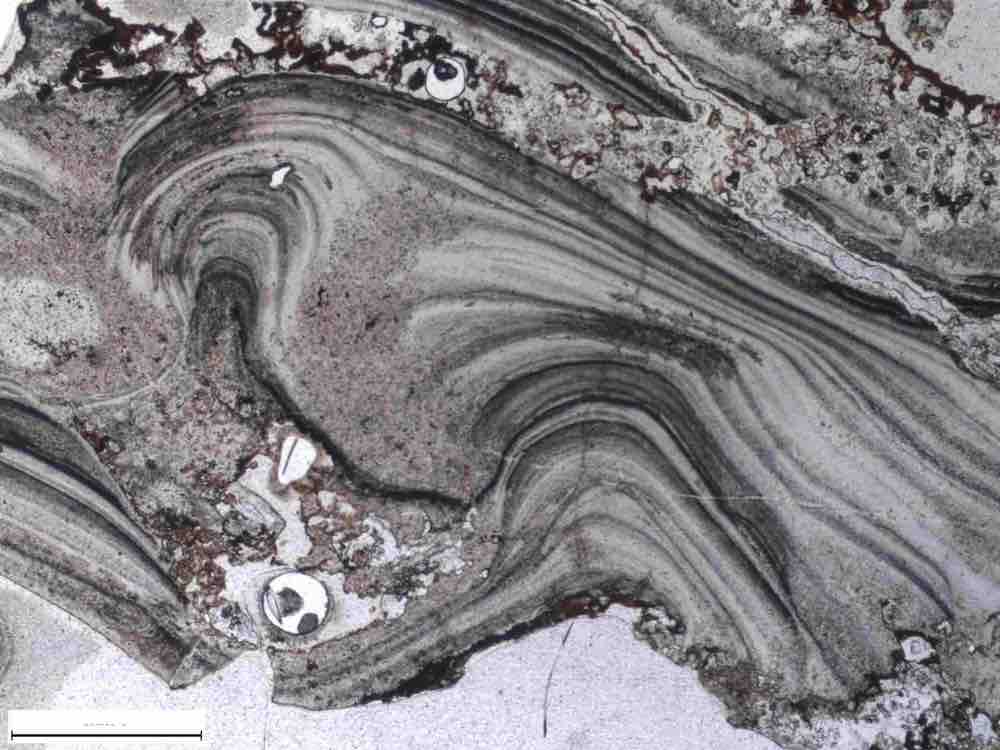Geological Evidence in Global Earth Amazing History
Geological Evidence Geological Evidence1. Introduction to Geological Evidence

Geological Evidence is the foundation of our knowledge about Earth’s natural history. It allows scientists to reconstruct past events through physical traces left in rocks, fossils, and sediments. Without it, our understanding of Earth would be incomplete.
By examining Geological Evidence, researchers can identify shifts in climate, plate movements, and mass extinctions. These findings reveal how interconnected natural systems are, influencing ecosystems and human history alike.
The role of Geological Evidence extends beyond academia. It supports industries such as mining, energy, and environmental management, demonstrating its relevance to both science and society.
2. The Role of Rocks in Earth’s Story

Rocks act as natural books that preserve information about Earth’s history. Their texture, mineral composition, and layering reveal the environmental conditions present when they formed.
Igneous rocks record volcanic activity, metamorphic rocks show pressure and heat transformations, and sedimentary rocks preserve organic matter and fossils. Each type contributes to a fuller picture of geological time.
Studying rocks allows geologists to identify regional histories and global patterns, connecting Earth’s processes across continents and ages.
3. Sedimentary Layers as Natural Archives
Sedimentary layers provide some of the clearest Geological Evidence. Each layer records depositional environments, from rivers to oceans, offering insights into ancient climates.
Fossils embedded within these layers enhance the record, revealing which plants and animals existed at specific times. This adds biological depth to geological findings.
By studying changes in sediment thickness and composition, scientists can identify major environmental events such as floods, droughts, and sea-level shifts.
4. Fossils as Geological Evidence of Life
Fossils represent direct evidence of ancient life and evolution. They provide crucial information about species diversity, adaptation, and extinction over time.
Paleontologists analyze fossilized bones, leaves, shells, and even microbial mats to understand ecosystems. These findings reveal the interplay between biology and geology.
The fossil record, while incomplete, remains one of the most powerful forms of Geological Evidence for understanding Earth’s history.
5. The Power of Plate Tectonics
Plate tectonics theory is supported by abundant Geological Evidence. Fossil distributions, rock formations, and magnetic data confirm that continents have shifted over millions of years.
The movement of plates explains earthquakes, volcanic eruptions, and mountain building. Without Geological Evidence, this dynamic view of Earth would remain speculative.
This theory unites geology under a single framework, showing how processes beneath Earth’s crust shape its surface.
6. Continental Drift and Its Proofs
The idea of continental drift was once controversial, but Geological Evidence proved it correct. Similar rock sequences and fossils found across distant continents support the concept.
For example, fossils of the reptile Mesosaurus appear in both Africa and South America, suggesting they were once joined.
Such findings highlight the importance of Geological Evidence in confirming revolutionary scientific theories.
7. Mountain Chains Across Continents
Mountain ranges provide Geological Evidence of tectonic collisions. The Appalachian Mountains in North America align with ranges in Europe, suggesting they were once connected.
These correlations demonstrate how continents collided and broke apart through time. Rocks within these ranges show folding, metamorphism, and uplift linked to tectonic activity.
This Geological Evidence deepens our understanding of supercontinent cycles, such as Pangaea and Gondwana.
8. Geological Evidence in Oceanic Ridges
Mid-ocean ridges are another powerful source of Geological Evidence. They reveal how new crust forms through seafloor spreading.
Magnetic striping in oceanic rocks records reversals of Earth’s magnetic field, providing time markers of geological processes.
This evidence confirms the mechanism behind continental drift, reinforcing plate tectonics as a global phenomenon.
9. Volcanic Rocks as Historical Records
Volcanic rocks preserve the violent history of eruptions. Their composition and structure provide Geological Evidence of magma sources and eruption styles.
Dating volcanic deposits enables scientists to map the frequency of eruptions and their environmental impact.
These records reveal how volcanism has influenced mass extinctions, climate change, and human societies throughout history.
10. Chemical Signatures of Lava Flows
The chemistry of lava flows provides Geological Evidence of Earth’s interior. Elements within volcanic rocks indicate mantle sources and tectonic settings.
By analyzing isotopes, geologists can determine the depth and temperature of magma formation.
Such data help build models of Earth’s internal processes and their effect on surface environments.
11. The Impact of Volcanic Eruptions
Volcanic eruptions leave distinct Geological Evidence, including ash layers and pyroclastic flows. These deposits often stretch across continents.
For instance, the eruption of Mount Tambora in 1815 left widespread ash that affected global climate, leading to the “Year Without a Summer.”
Such Geological Evidence highlights how localized events can produce worldwide consequences.
12. Glacial Deposits and Climate History

Glacial deposits preserve Geological Evidence of past ice ages. Features such as moraines and erratics show the reach of glaciers.
These formations reveal how climate has fluctuated over millennia, influencing landscapes and ecosystems.
They also provide comparisons for current climate change, showing how unusual today’s rapid warming is.
13. Moraines and Ice Age Traces
Moraines are accumulations of debris left by glaciers. They act as Geological Evidence of glacial movement and retreat.
By mapping moraines, scientists reconstruct the maximum extent of ice sheets and their melting patterns.
This knowledge aids in understanding long-term climate cycles and their impact on human history.
14. Geological Evidence in Glacial Striations
Glacial striations are grooves carved into bedrock by moving ice. They serve as Geological Evidence of glacier direction and strength.
These marks show how massive ice sheets reshaped continents, carving valleys and altering drainage systems.
Combined with other deposits, striations provide a clear picture of Earth’s glacial history.
15. Ocean Sediments as Global Archives
Ocean sediments contain Geological Evidence of both biological and chemical changes. Microfossils within them record marine life through time.
Chemical signals reveal past ocean temperatures and nutrient cycles.
By drilling deep-sea cores, scientists access continuous records spanning millions of years, critical for global climate studies.
16. Microfossils in Marine Studies
Microfossils are tiny yet powerful Geological Evidence. Species like foraminifera reveal details about past ocean chemistry.
Their presence or absence indicates temperature fluctuations, oxygen levels, and productivity.
Microfossil research connects ocean history with broader global changes.
17. Carbon Cycles in Ocean Records
Ocean sediments track carbon cycles, providing Geological Evidence of atmospheric changes.
These records reveal links between ocean storage of carbon and global warming or cooling events.
Modern climate models use this Geological Evidence to predict future environmental outcomes.
18. Geological Evidence in Earthquakes
Earthquakes leave Geological Evidence such as ruptures, fault scarps, and shifted landscapes.
These signs record both the magnitude and frequency of seismic events.
By analyzing this data, scientists improve preparedness and hazard mitigation.
19. Fault Lines and Seismic Activity
Fault lines are crucial Geological Evidence of tectonic stress. They show where Earth’s crust breaks and shifts.
Studying faults helps estimate earthquake risks and recurrence intervals.
This information guides construction, urban planning, and disaster readiness.
20. Predicting Earthquake Risks
Geological Evidence of past quakes informs risk prediction. Layers of displaced sediments reveal cycles of seismic activity.
Though prediction is not exact, probabilities can be improved with this evidence.
This enhances safety planning for vulnerable regions.
21. Geological Evidence of Human Evolution
Human evolution is deeply connected to Geological Evidence, as fossils of early hominins are preserved within sedimentary layers. These findings show how our species adapted to shifting climates and landscapes.
The geological context of archaeological sites helps establish accurate timelines. Volcanic ash layers, for example, can be radiometrically dated, anchoring the age of ancient tools and bones.
Without Geological Evidence, human history would lack the depth and precision that supports our understanding of cultural and biological development.
22. Fossilized Tools and Ancient Habitats
Stone tools provide Geological Evidence of early human activity. Found in caves, riverbeds, and ancient settlements, they reveal how humans interacted with their environment.
These tools are often preserved within distinct soil or sediment layers, helping scientists reconstruct the technological progress of ancient societies.
By examining both the artifacts and their geological context, researchers connect human innovation with environmental adaptation.
23. Soil Composition in Archaeology
Soil analysis is a valuable aspect of Geological Evidence. Layers of ash, charcoal, and organic material tell stories about habitation and food practices.
Changes in soil color, texture, and chemistry reveal long-term settlement patterns and agricultural activity.
This geological perspective ensures that archaeological interpretations are rooted in scientific accuracy.
24. Radiometric Dating in Geological Studies
Radiometric dating is one of the most powerful tools for interpreting Geological Evidence. It measures isotopes in rocks to determine absolute ages.
Methods such as uranium-lead or potassium-argon dating allow scientists to date rocks and fossils millions of years old.
These precise techniques anchor the geological time scale, giving credibility to evolutionary and environmental research.
25. Isotopic Analysis in Geological Evidence
Isotopic analysis extends beyond dating, providing information about climate and diet. Oxygen isotopes, for example, record past temperatures.
Carbon isotopes in fossils reveal vegetation types and food sources consumed by animals and early humans.
This level of detail makes Geological Evidence more than a timeline; it becomes a story of life’s interaction with the environment.
26. Geological Time Scale Explained
The geological time scale organizes Earth’s history based on layers of rock and fossil evidence. It divides time into eons, eras, periods, and epochs.
Geological Evidence ensures that these divisions are grounded in measurable changes, such as mass extinctions or climate shifts.
This scale provides the framework for understanding evolution, tectonics, and Earth’s continuous transformation.
27. The Precambrian Record of Earth
Precambrian rocks contain Geological Evidence of Earth’s earliest history, from its formation to the rise of multicellular life.
These rocks are ancient and often metamorphosed, but they preserve traces of the first oceans and primitive microorganisms.
Studying this record reveals the origins of Earth’s crust and atmosphere, forming the foundation of all subsequent history.
28. Paleozoic Fossil Richness
The Paleozoic era is rich in Geological Evidence of marine life, including trilobites, brachiopods, and corals.
Sedimentary rocks from this time also preserve the first land plants and early vertebrates.
This era highlights how life diversified, shaping ecosystems that would set the stage for future evolution.
29. Mesozoic Geological Evidence
The Mesozoic era, often called the “Age of Dinosaurs,” offers abundant Geological Evidence through fossils, volcanic deposits, and shifting continents.
Dinosaurs, marine reptiles, and early mammals appear in rocks from this era, alongside flowering plants.
Plate tectonics reshaped Earth dramatically during this time, leaving behind evidence in mountain ranges and rift valleys.
30. The Cenozoic Era in Rocks
The Cenozoic era preserves Geological Evidence of mammalian dominance and human emergence.
Glacial cycles, volcanic eruptions, and sedimentary deposits document the changing climate.
This record explains how ecosystems evolved into their modern forms, linking geology directly with today’s landscapes.
31. Geological Evidence of Asteroid Impacts
Asteroid impacts leave unique Geological Evidence, including craters, shocked quartz, and iridium layers.
The most famous example is the Chicxulub crater in Mexico, linked to the extinction of dinosaurs.
These signs confirm that extraterrestrial events have shaped Earth’s history alongside internal geological forces.
32. Crater Formations as Proof
Craters provide direct Geological Evidence of high-energy impacts. Their circular shape, ejecta deposits, and altered rocks testify to catastrophic events.
Some craters are visible on the surface, while others lie buried beneath sediments, detectable only by geophysical methods.
These features reveal the violent interactions between Earth and its cosmic environment.
33. Extinction Events in Geological Records
Mass extinctions are recorded in Geological Evidence through sudden shifts in fossil abundance.
Boundaries such as the Permian-Triassic or Cretaceous-Paleogene show dramatic losses of biodiversity.
Studying these layers helps scientists understand the triggers of mass extinctions and their global consequences.
34. Geological-Evidence of Climate Cycles
Geological-Evidence shows that Earth’s climate has cycled between warm and cold periods over millions of years.
Rock chemistry, ice cores, and fossils provide a timeline of these changes.
Understanding these cycles helps distinguish natural variability from modern human-driven climate change.
35. Ice Cores and Ancient Atmospheres
Ice cores drilled from glaciers preserve tiny bubbles of ancient air, offering Geological-Evidence of past atmospheric composition.
They reveal levels of greenhouse gases like carbon dioxide and methane over hundreds of thousands of years.
This record allows scientists to compare modern climate changes with natural historical baselines.
36. Geological-Evidence of Desert Formation
Desert landscapes preserve Geological-Evidence of long-term arid conditions. Sand dunes, evaporite deposits, and dry lakebeds provide clues about climate.
These features show how shifting wind patterns and rainfall have transformed ecosystems over time.
Studying desert records helps predict future challenges in water availability and desertification.
37. River Valleys and Sediment Records
Rivers transport sediments that preserve Geological-Evidence of erosion and deposition.
Floodplains, deltas, and terraces record the history of water flow and environmental change.
These deposits reveal the role of rivers in shaping landscapes and supporting ancient civilizations.
38. Geological-Evidence in Cave Systems
Caves offer unique Geological-Evidence in the form of stalactites, stalagmites, and mineral deposits.
These features grow slowly over thousands of years, recording shifts in temperature and rainfall.
Caves also preserve fossils and artifacts, bridging geology with archaeology.
39. Stalactites and Climate Data
Stalactites and stalagmites grow layer by layer, trapping chemical signals in their structure.
Oxygen isotopes in these formations provide Geological-Evidence of rainfall and temperature patterns.
This record extends back hundreds of thousands of years, complementing ice cores and sediments.
40. Geological-Evidence in Salt Deposits
Salt deposits, or evaporites, form when ancient seas dry up, leaving mineral layers behind.
These deposits are powerful Geological-Evidence of past climates, indicating arid conditions.
They also reveal shifts in sea level and tectonic activity, offering clues about Earth’s dynamic history.
41. Petroleum Formation and Rock Records
Petroleum is formed through geological processes that leave clear Geological-Evidence in rock layers. Organic material buried under pressure and heat transforms into hydrocarbons over millions of years.
Sedimentary basins where petroleum forms preserve not only the fuels themselves but also the history of ancient marine ecosystems. These environments highlight how natural processes create resources vital for human use.
The study of petroleum deposits links geology with energy exploration, demonstrating how Geological-Evidence is applied in modern industries.
42. Geological-Evidence in Mining Industries
Mining relies heavily on Geological-Evidence to locate valuable minerals. Ore deposits form through processes like volcanic activity, sedimentation, and metamorphism.
Geologists interpret rock layers and structures to identify regions with high mineral potential. This reduces risks and maximizes efficiency in extraction.
By applying Geological-Evidence, industries can balance economic growth with environmental protection, making mining more sustainable.
43. Soil Stratigraphy for Agriculture
Agriculture benefits from Geological-Evidence preserved in soil layers. Stratigraphy reveals nutrient availability, erosion rates, and long-term fertility.
Farmers and agricultural scientists analyze soil horizons to understand how crops can thrive in specific environments. This supports better land management.
In this way, Geological-Evidence directly impacts food security and the sustainability of agricultural systems.
44. Geological-Evidence and Water Resources
Aquifers and groundwater systems are understood through Geological-Evidence found in rocks and sediments. Porosity and permeability determine how water is stored and flows underground.
Geological mapping identifies recharge zones and helps prevent over-extraction, ensuring long-term water availability.
Thus, Geological-Evidence plays a critical role in managing one of humanity’s most important resources: fresh water.
45. Geomorphology in Earth Studies
Geomorphology, the study of landforms, relies on Geological-Evidence to explain how mountains, valleys, and plains are shaped.
Erosion, deposition, and tectonic activity leave visible marks on landscapes that can be interpreted scientifically.
This branch of geology demonstrates the interconnectedness of natural forces and their role in shaping human settlement patterns.
46. Geological-Evidence in Coastal Erosion
Coastal erosion leaves behind Geological-Evidence in the form of retreating cliffs, beach deposits, and dune shifts.
These features reveal the power of waves, storms, and rising sea levels in reshaping coastlines.
Understanding this evidence is essential for planning sustainable coastal development and protecting vulnerable communities.
47. Landslides and Rock Movements
Landslides provide Geological-Evidence of instability within slopes and rock masses. They are triggered by rainfall, earthquakes, or human activities.
The deposits left behind indicate the scale and frequency of slope failures, which are crucial for risk assessment.
By studying this Geological-Evidence, engineers and geologists can design safer infrastructure in landslide-prone areas.
48. Geological-Evidence in Coral Reefs
Coral reefs preserve Geological-Evidence of both biological and geological processes. Their calcium carbonate skeletons record ocean chemistry and sea-level changes.
Reef structures reveal how ecosystems adapted to temperature fluctuations and rising seas.
Studying these formations helps scientists monitor modern reef decline and predict future marine changes.
49. Limestone Records of Ancient Seas
Limestone is a common sedimentary rock that provides Geological-Evidence of ancient shallow seas. It often contains fossils of marine organisms.
These deposits show where seas once covered land, revealing past environments and tectonic shifts.
The chemical composition of limestone also offers insights into ocean chemistry and atmospheric conditions.
50. Geological-Evidence in Plate Boundaries
Plate boundaries are zones where Geological-Evidence is most visible, from earthquakes to volcanoes.
Divergent, convergent, and transform boundaries each leave distinct signatures in rocks and landscapes.
By analyzing these areas, scientists understand the mechanisms driving Earth’s most powerful natural forces.
51. Geological Maps and Their Value
Geological maps condense vast amounts of Geological-Evidence into visual form. They show rock types, faults, and resource locations.
These maps are indispensable for land planning, construction, and hazard assessment.
Through mapping, Geological-Evidence becomes accessible not only to scientists but also to policymakers and communities.
52. Satellite Technology in Geological-Evidence
Modern satellite technology enhances the study of Geological-Evidence. Remote sensing reveals rock formations, mineral deposits, and changes in landforms.
This global perspective allows for monitoring areas that are difficult to access on foot.
Satellites ensure Geological-Evidence is continuously updated, supporting both research and disaster response.
53. Remote Sensing for Earth’s History
Remote sensing uses tools like LiDAR and radar to detect Geological-Evidence hidden beneath forests or deserts.
These methods uncover buried structures, ancient riverbeds, and archaeological sites with minimal disturbance.
This integration of technology strengthens the connection between geology, archaeology, and environmental studies.
54. Geological-Evidence in Natural Hazards
Natural hazards such as tsunamis, earthquakes, and floods leave clear Geological-Evidence. Sediments, fault lines, and displaced materials preserve the history of disasters.
Studying these traces helps predict future risks and improve emergency preparedness.
This shows how Geological-Evidence directly protects human life by informing resilience strategies.
55. Earthquake Preparedness and Geology
Geological-Evidence from past earthquakes is essential for building safer cities. Fault trenching, soil analysis, and historical records provide crucial insights.
This evidence allows urban planners to identify high-risk zones and implement building codes accordingly.
Preparedness based on Geological-Evidence reduces fatalities and damage during seismic events.
56. Geological-Evidence in Modern Climate Studies
Climate science depends on Geological-Evidence to compare current changes with historical patterns. Ice cores, sediments, and isotopes reveal natural fluctuations.
This context makes it clear how unusual modern climate change is, given the speed of rising temperatures.
Geological-Evidence thus strengthens the scientific consensus on the urgency of addressing climate issues.
57. Geological-Evidence and Environmental Law
Environmental regulations often rely on Geological-Evidence to define protected areas, manage resources, and monitor hazards.
For example, groundwater laws use geological data to determine safe extraction levels.
This legal framework ensures that Geological-Evidence guides policies that balance human needs with environmental sustainability.
58. The Role of Geological Surveys
National geological surveys collect and organize Geological-Evidence for public and private use.
Their research supports infrastructure projects, disaster management, and resource exploration.
By making Geological-Evidence accessible, these surveys ensure that science benefits all sectors of society.
59. Geological-Evidence in Academic Research
Universities and research institutes use Geological-Evidence to advance scientific understanding.
From studying the origins of life to predicting earthquakes, geology remains a vital discipline.
These academic contributions expand humanity’s knowledge while training the next generation of scientists.
60. Conclusion: The Lasting Value of Geological-Evidence
Geological-Evidence is the foundation upon which Earth’s history is written. It connects past events with present challenges and future planning.
From fossils to fault lines, the stories preserved in rocks and sediments remind us of our planet’s complexity.
Ultimately, Geological-Evidence ensures that science, industry, and society move forward with an informed understanding of Earth.

